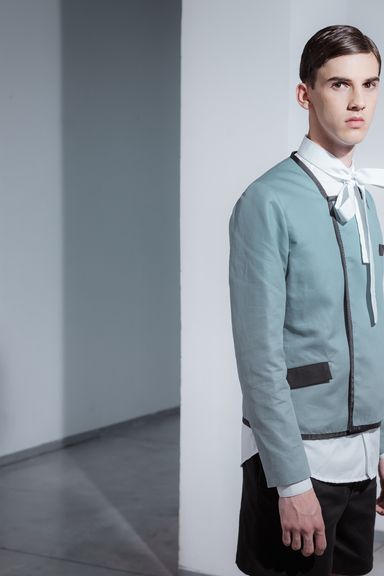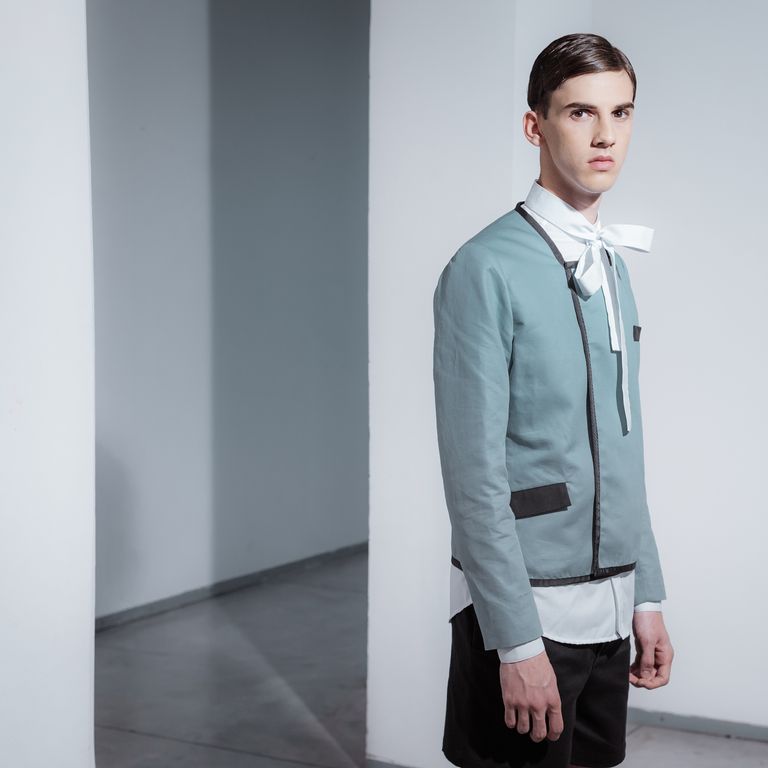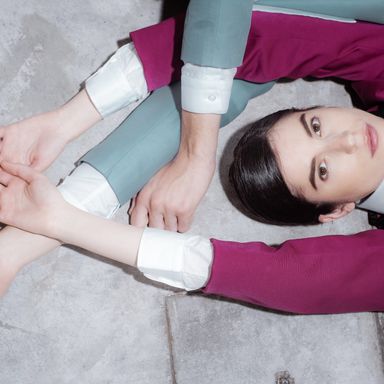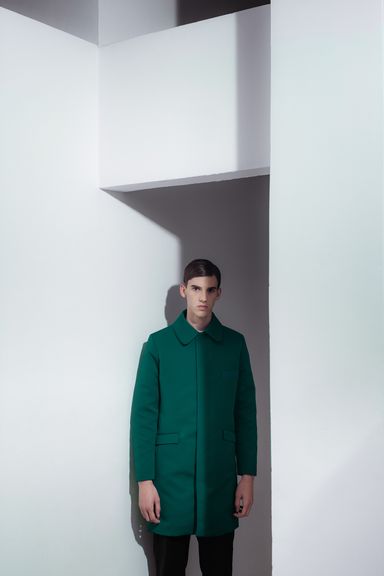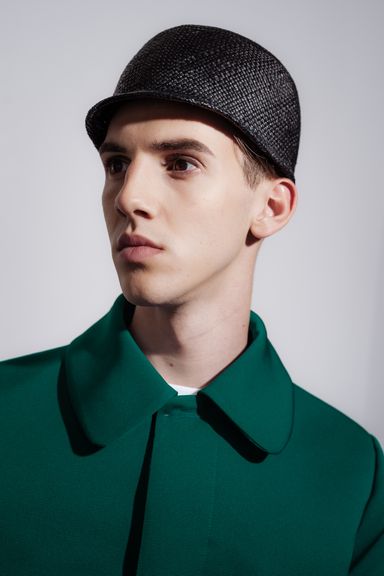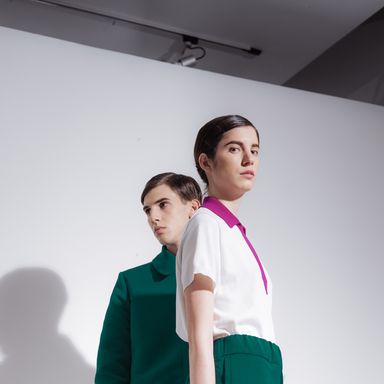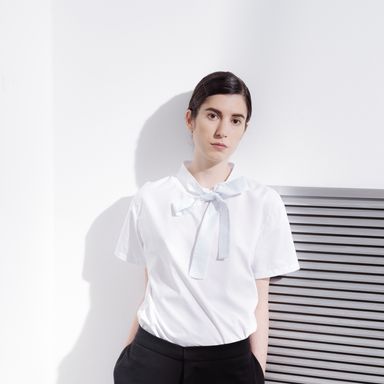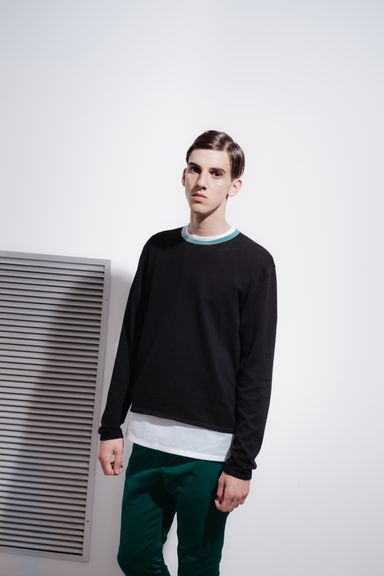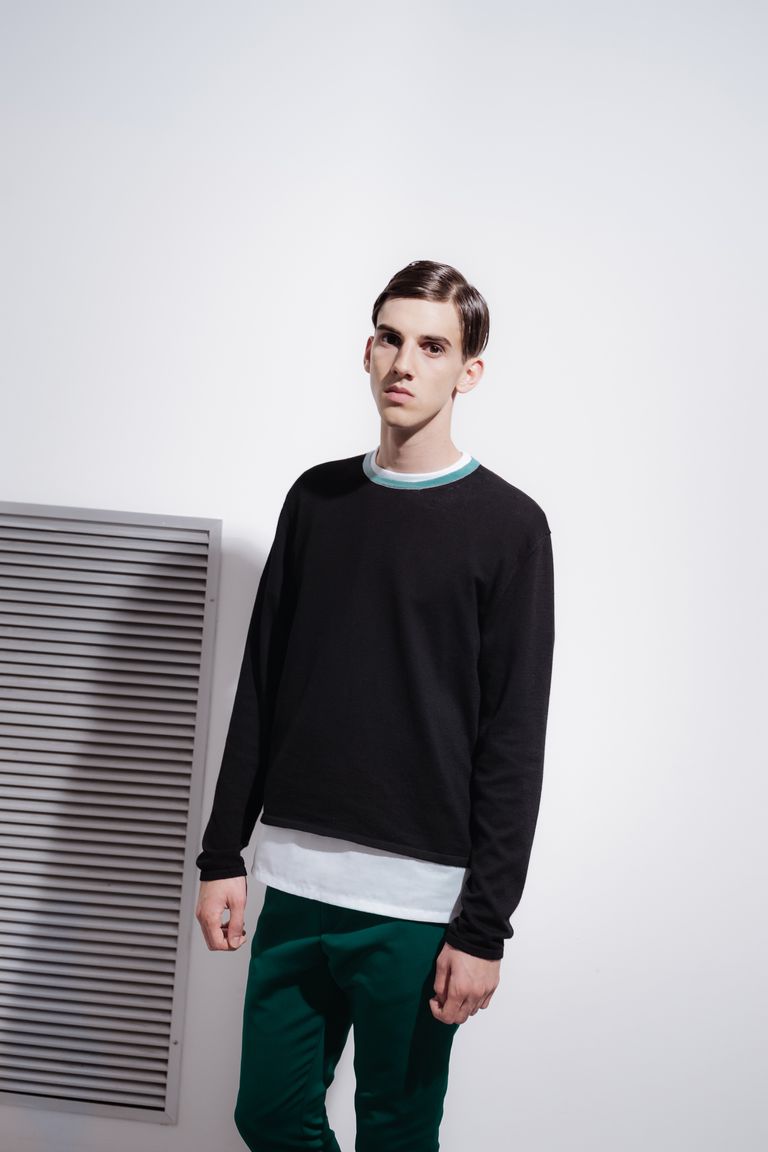3 Designers on How They Define Genderless Fashion
Genderless fashion is in the air, from boundary-pushing unisex lines like Hood by Air to the Gucci men’s runway, which incorporated pussy-bow blouses and lace. As part of Pitti Immagine, the multidimensional fashion fair on now in Florence, Pitti director Agostino Poletto spearheaded Open, a unisex showcase. “Overcoming the rigid distinction between the traditional male and female universes” was the goal, Poletto told the Cut. Twenty brands from around the world were selected for the showcase. The show was put together “without any provocative intention,” Poletto noted — simply “without obligatory reference to one sex or the other.”
The Cut spoke to three designers from the showcase about gender fluidity, quandaries about sizing, and the limiting nature of fashion terminology.
Wolfgang Jarnach | w’lfg’ng
Munich
Outerwear
When you started your label, was your initial intention to be unisex? Or did you expand from one gender into both?
When we started our first project, for a temporary shop, we designed garments for men and garments for women. These were never unisex garments, but we had a strong affinity for twinning or arranging things in couples. We used the same fabrics and colors for both. We still continue to do this today.
What does unisex mean to you, as a concept?
We would never describe our products as unisex. In terms of form and fit we design jackets for women and we design jackets for men. We believe menswear always has to be masculine, and womenswear always has to stay feminine. The only difference is that we suggest the same style for both genders. Which means there is a bomber jacket in a certain color and fabric for men, and then there is a slightly adjusted bomber jacket in the same color and fabric for women. At first sight it looks like the same thing, but if you take a closer look, the jacket for girls has a distinctive feminine touch to it. What we do is better described as “multisex,” because it is one style that works for many. It’s so much more than just one garment for everyone.
How do you think about sizing if you have to accommodate proportions for men and women?
We do not cut the traditional unisex way. There will always be a pattern for both genders. The human body is very unique, which means a female body wants to be presented in a different way than a male body. You can play with this, of course, but it should never look like a forced compromise.
What’s the hardest, or most nuanced, element to adjust?
Designing garments is about proportion and balance. Even if you do something oversize, the degree of oversizeness needs to be adjusted for male and female.
Do you feel the unisex concept is taking off where you’re from? Are people embracing it?
Yes, we think it is definitely a thing people are embracing. It’s very common in street style already. If you look at all those sneaker brands, you will always find the same sneaker worn by boys and girls.
Do you wear unisex items?
I don’t wear items labeled as unisex, but I have a bunch of old cashmere jumpers from my girlfriend’s dad, and we share them all the time.
Alexia Aubert | Solovière
Paris
Footwear
When you started your label, was your initial intention to be unisex? Or did you expand from one gender into both?
The label was created in June 2014, with the primary aim of offering new men’s classics: the “new shoe.” It was Sarah [Lerfel], from Colette, who first ordered women’s sizes. That gave a new impetus to the project.
What does unisex mean to you, as a concept?
Unisex simply means that the product is so perfect that both men and women desire it. The object works for both genders because it goes beyond one’s sex. The perfect example would be a white shirt, jeans, and a trench.
How do you think about sizing if you have to accommodate proportions for men and women?
We first think of the man’s foot proportions; afterward, we adjust for women. We adapt the templates for shoes: It’s technical, but doable.
What’s the best thing about making something for both genders?
To address everyone with our creations. We have couples who want to wear the same slipper on vacation, or women who love their boyfriend’s shoes so much that they want the same one in their size.
Do you feel the unisex concept is taking off where you’re from? Are people embracing it?
In Paris, women love to borrow their boyfriend’s stuff. We immediately think of mythical couples like Serge Gainsbourg and Jane Birkin, who had a unisex wardrobe and thus a real tandem style.
Andrea Masato and Gianluca Ferracin | EDITHMARCEL
Venice
Ready-to-wear
When you started your label, was your initial intention to be unisex? Or did you expand from one gender into both?
The idea, since its earliest stage, was that the brand should not have a gender. The name itself serves as a proof: We joined Edith, a female name, to Marcel, a typically male one. In this collection, we started from a male physicality, but this does not exclude that in the next we will focus firstly on a female physicality. We arrive at a result that negates the definition of gender.
What does unisex mean to you, as a concept?
Philosophically speaking, for us the word unisex represents a new stage of evolution, the fall of outdated and obsolete stereotypes. Concretely, unisex is something as clear and immediate as a white T-shirt.
How do you think about sizing if you have to accommodate proportions for men and women?
We have developed our own system of sizes for each garment; each size corresponds both to a classical male size and to a classical female size. It is up to the customer to choose their size, or the kind of fit they want to build their own silhouette. Size as a number is quite a relative concept, since what for one brand is a 38, another one is a 42 — and that is not a matter of gender, really.
What’s the best thing about making something for both genders?
It was interesting to deal with the barriers that gender differences create in daily dress. We realized there are issues we had never thought about before while designing, and that have suddenly become “problems”: Have you ever thought about the buttons of a shirt? Which side do you choose for the buttons in a unisex shirt?
With regard to our work, the concept of unisex is not entirely accurate; we use the word a-sex, which is a more contemporary and pertinent concept. More than the sum of the two genders, we try to look at how to erase them both, giving shape to a body that is entirely new, freed from typical characteristics. Our project does not have to do with the idea of union, but with that of absence: the absence of differences, and the absence of gender. Our goal is to re-create an aesthetic, linked to physicality, which respects the features of both sexes, annulling the notion of gender itself.
Do you feel the unisex concept is taking off where you’re from? Are people embracing it?
Italy is a place where traditions are so strong and present, it is sometimes hard to be understood in what we do. We notice this almost a every day, while trying to explain to suppliers and manufacturers our project and our product — they insist on asking if the trousers are for men or for women.
These interviews have been edited and condensed.
